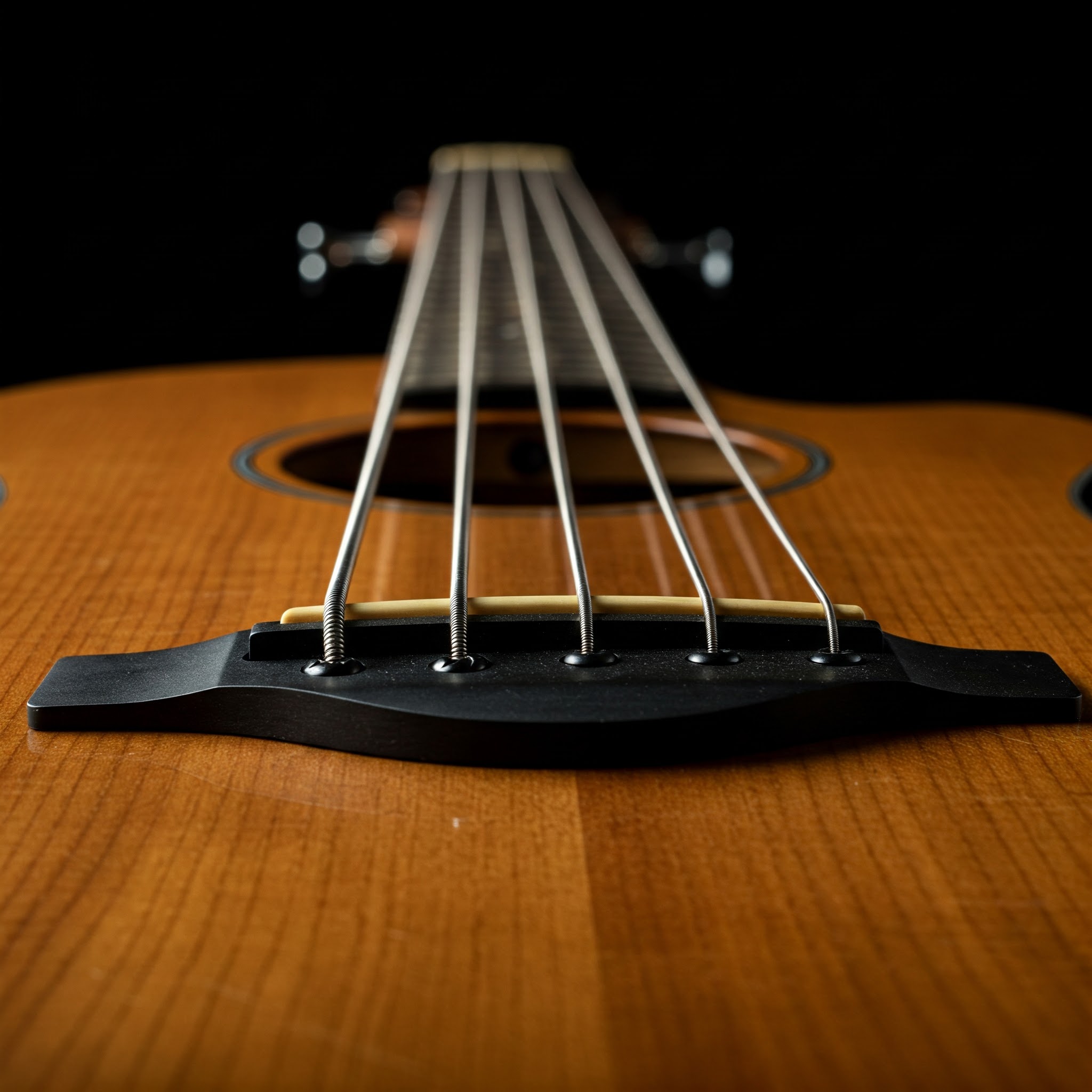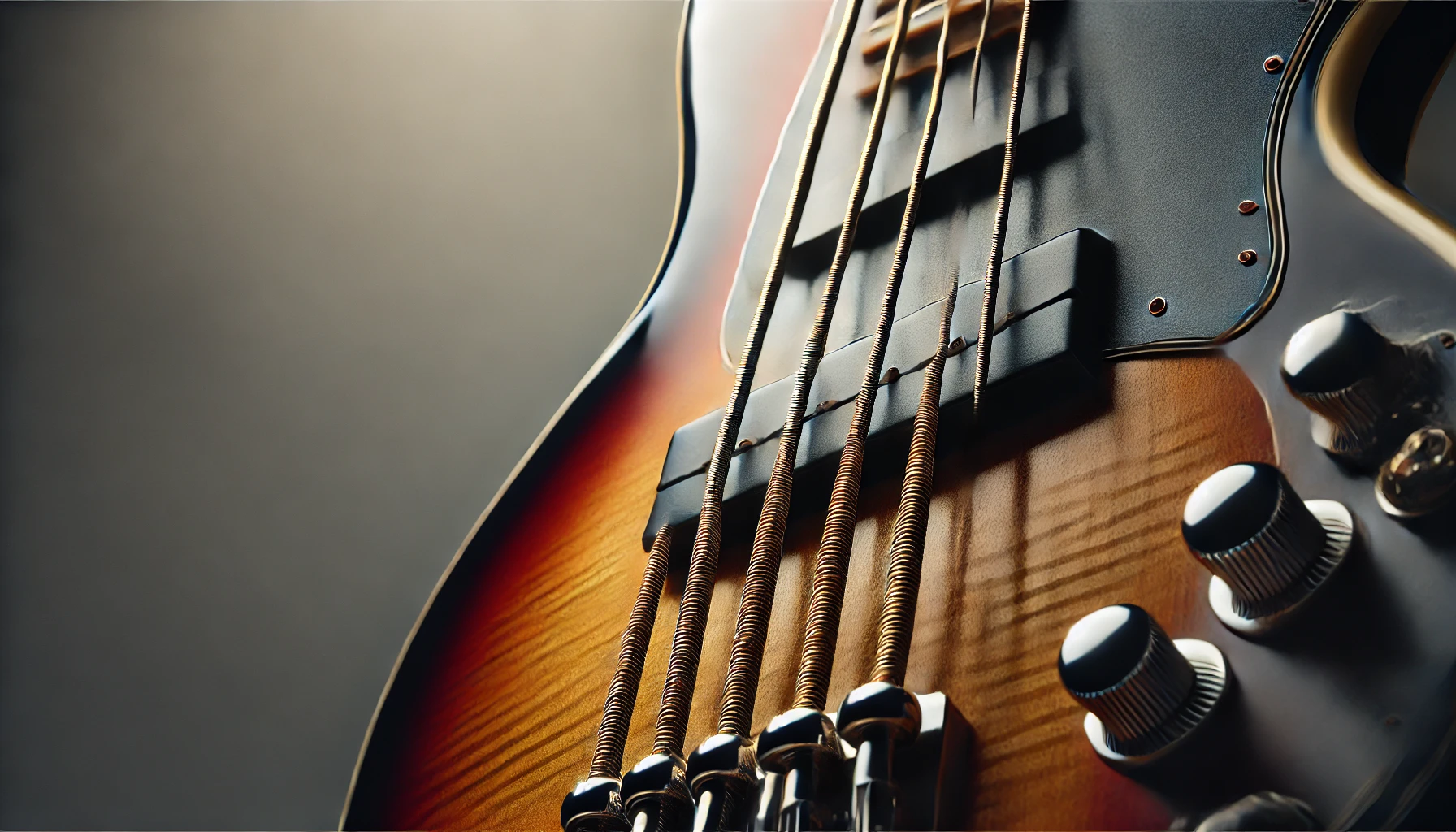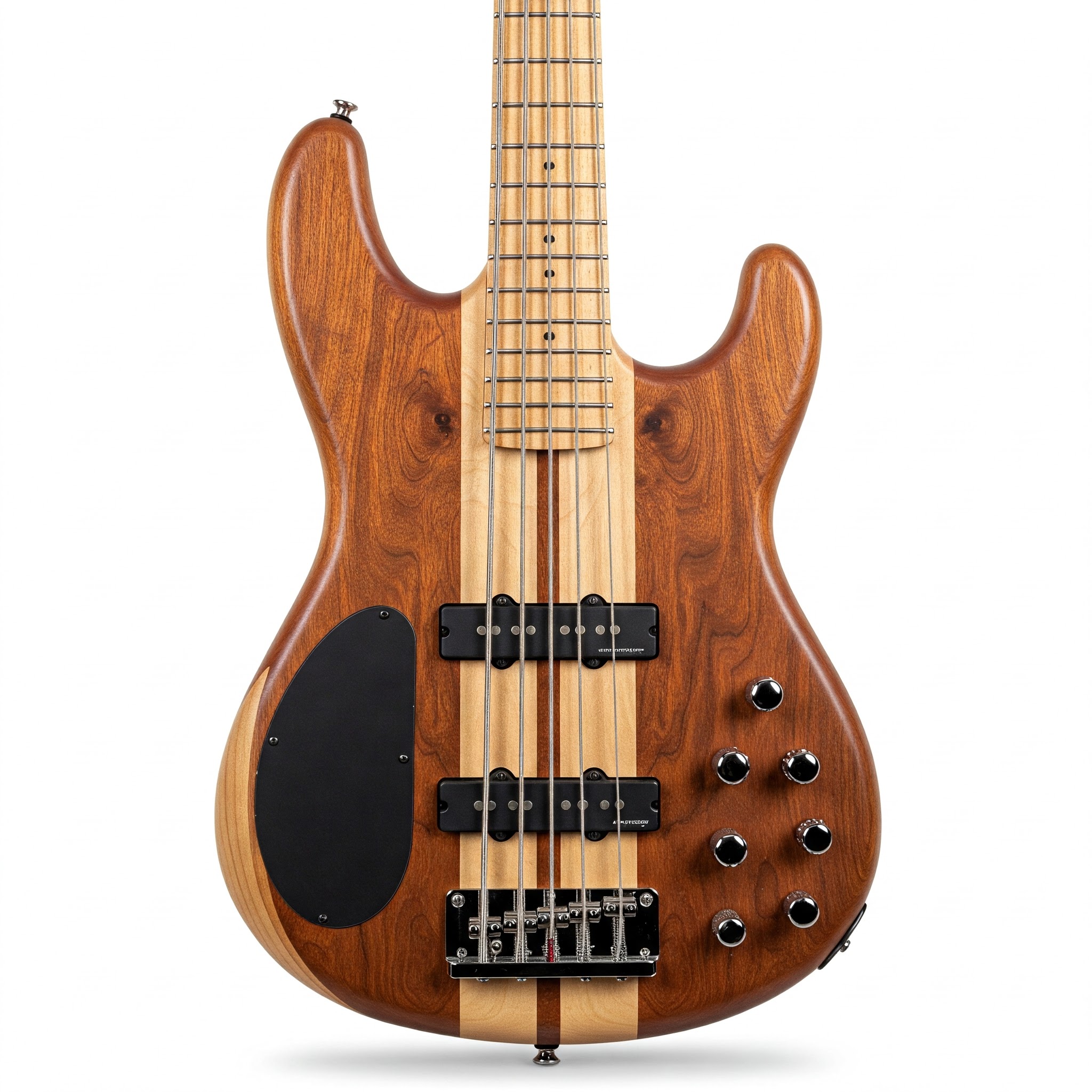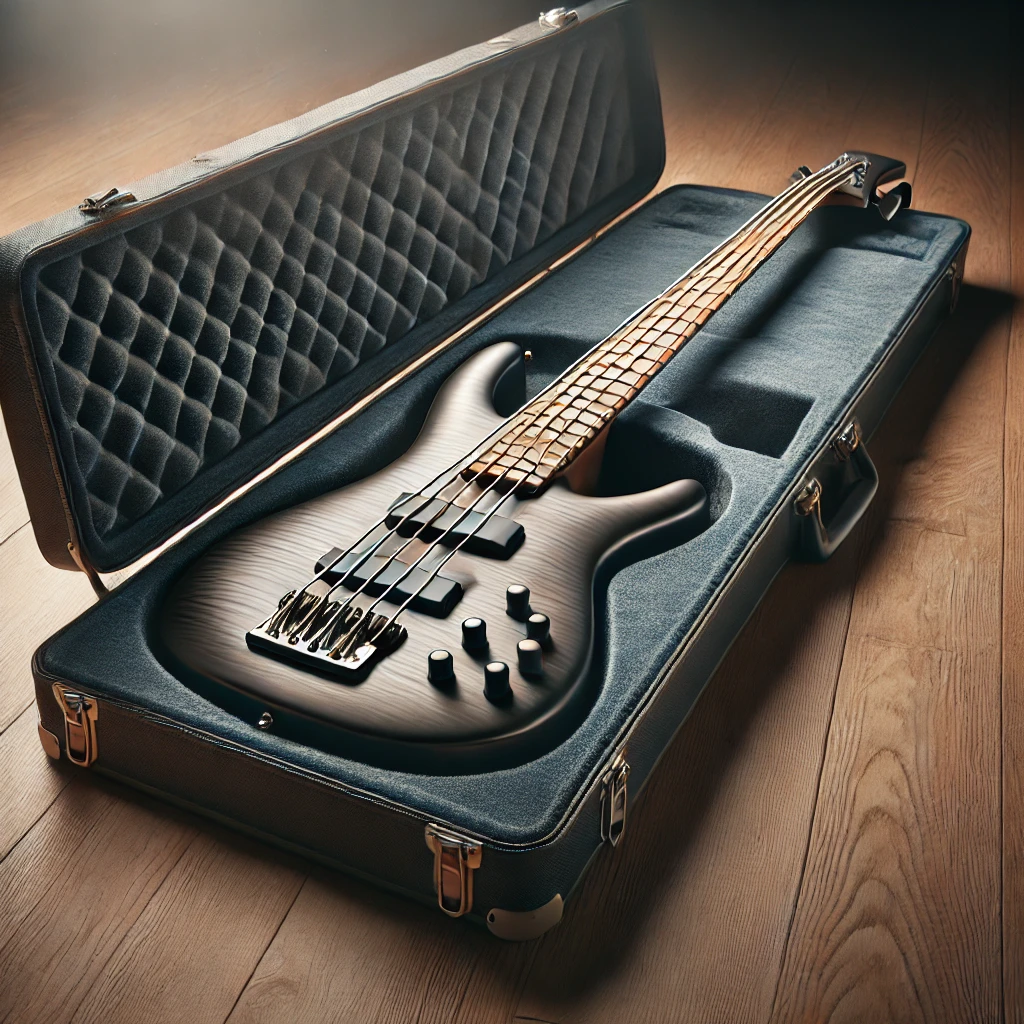When it comes to exploring the depths of bass playing, a 5 string acoustic bass offers versatility that traditional 4-string instruments simply can’t match. As a professional bassist with over 15 years of experience playing everything from jazz to folk, I’ve had the opportunity to test dozens of these magnificent instruments. Whether you’re a seasoned player looking to expand your range or a curious musician exploring new sonic territories, this comprehensive guide will walk you through everything you need to know about the 5 string acoustic bass.
✨Was this helpful? Spread the word! 🚀
The additional low B string opens up a world of possibilities, allowing you to reach those rumbling low notes that add depth and richness to your playing. But finding the right 5 string acoustic bass can be challenging with so many options available. That’s why I’ve created this in-depth guide to help you navigate the world of extended-range acoustic basses.
What Is a 5 String Acoustic Bass? 🎸
A 5 string acoustic bass is essentially an acoustic bass guitar with an extra string, typically a low B string that extends the instrument’s range below the standard E string. This addition gives bassists access to lower notes without having to detune their instrument, providing greater versatility for various musical styles.
Unlike electric basses, a 5 string acoustic bass produces sound primarily through its hollow body and soundhole, creating natural amplification without requiring an external power source. Many models do come with built-in electronics, allowing them to be plugged directly into an amplifier or PA system for increased volume during performances.
The 5 string acoustic bass guitar combines the warm, organic tone of an acoustic instrument with the extended range typically associated with modern electric basses. This makes it particularly suitable for genres ranging from folk and country to jazz and even certain styles of rock and metal where those deeper notes can add significant impact.

Benefits of Choosing a 5 String Acoustic Bass ✅
The advantages of playing a 5 string acoustic bass extend far beyond simply having access to lower notes. Here are some compelling reasons why bassists might consider making the switch:
- Extended Range: The additional low B string allows you to reach notes that would be impossible on a standard 4-string bass without detuning.
- Versatility: Play various musical styles without changing instruments or tunings.
- Improved Technique: The wider neck can help develop stronger hand muscles and more precise fingering.
- Minimalist Setup: Perform acoustically without amplification in intimate settings.
- Unique Tone: Enjoy the warm, resonant sound characteristic of acoustic instruments.
- Portability: Practice anywhere without needing electronic equipment.
For players transitioning from electric bass to acoustic bass strings, the 5-string variant offers a familiar experience while introducing the distinctive tonal qualities of an acoustic instrument.
Types of 5 String Acoustic Bass Guitars 🔍
When exploring the market for a 5 string acoustic bass, you’ll encounter several distinct variations, each offering unique characteristics suited to different playing styles and preferences.
Acoustic-Only Bass Guitars
True acoustic bass guitars rely solely on their hollow bodies and sound chambers to produce volume. These instruments typically feature:
- Larger body dimensions to generate sufficient acoustic volume
- No built-in electronics
- Traditional acoustic construction with soundhole and bracing patterns
- Pure, organic tone without electronic coloration
While these instruments offer authentic acoustic sound, they may struggle to project enough volume for band situations without amplification.
Acoustic-Electric Bass Guitars
Most commonly found on the market today, acoustic electric bass guitars combine acoustic design with onboard electronics, offering:
- Built-in preamps and pickups
- Volume and tone controls
- Tuners and sometimes EQ options
- The ability to play both acoustically and amplified
Acoustic electric bass guitar strings work equally well whether you’re playing unplugged or through an amplifier, making these instruments remarkably versatile for various performance contexts.
Semi-Hollow and Chambered Designs
Some 5 string acoustic bass models feature semi-hollow construction rather than fully acoustic designs:
- Partially hollow body with solid center block
- Smaller f-holes instead of a traditional soundhole
- Reduced feedback when amplified
- Hybrid tone between acoustic and electric characteristics
These designs offer a compromise between the warmth of acoustic instruments and the functionality of electric basses.
Anatomy of a 5 String Acoustic Bass 📏
Understanding the components of a 5 string acoustic bass can help you make more informed purchasing decisions. Here’s a breakdown of the key elements that contribute to an instrument’s sound and playability:
Body Construction
The body of an acoustic bass significantly influences its tone and projection:
- Top Wood: Typically spruce or cedar, the soundboard is crucial for tone generation
- Back and Sides: Often made from mahogany, maple, or rosewood to add different tonal characteristics
- Bracing Pattern: Internal structural supports that affect resonance and sustain
- Body Size: Generally larger than acoustic guitars to produce sufficient low-end response
Neck and Fingerboard
The neck design impacts playability, especially important given the wider profile needed for five strings:
- Scale Length: Typically 34″ (long scale) like most electric basses
- Neck Wood: Usually maple or mahogany
- Fingerboard Material: Rosewood, ebony, or composite materials
- Fret Count: Generally 20-24 frets
- Neck Profile: Varies from thin to thick, affecting comfort during play
Electronics (for acoustic-electric models)
Quality electronics make a significant difference in amplified performance:
- Pickup Types: Piezo, magnetic, or microphone systems
- Preamp Features: EQ controls, phase switches, tuners
- Battery Access: How easily the battery can be changed
- Output Options: Standard ¼” jack, sometimes with XLR output
Hardware Components
The hardware affects both the function and aesthetics of the instrument:
- Tuning Machines: Precision and stability of tuners
- Bridge Design: How strings transfer vibration to the body
- Nut and Saddle Material: Bone, synthetic, or metal options
- Strap Buttons: Placement and security
Top 5 String Acoustic Bass Models in 2025 🏆
After extensive testing and research, I’ve compiled a list of the top 5 string acoustic bass guitars currently available on the market. These selections represent exceptional value, quality, and performance across different price points.
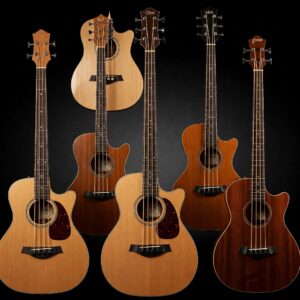
Premium Tier (Over $1000)
Ibanez AEB105E-BK 5-String Acoustic-Electric Bass
The Ibanez AEB105E-BK stands as a premium option for serious bassists seeking professional quality. With its distinctive black finish and ergonomic design, this bass immediately catches the eye. The solid spruce top paired with mahogany back and sides delivers remarkable tonal balance, while the Fishman Sonicore pickup system provides crystal-clear amplified sound.
Key Features:
- Solid spruce top with mahogany back and sides
- 5-piece maple/rosewood neck with 34″ scale
- Fishman Sonicore pickup with SST preamp
- 22 medium frets on bound rosewood fingerboard
- Balanced XLR and ¼” outputs
Best For: Professional bassists and recording artists who demand exceptional sound quality and versatility.
Taylor AB2-5 5-String Acoustic Bass
Known for their premium acoustic guitars, Taylor brings their craftsmanship to the bass world with the AB2-5. This instrument features Taylor’s proprietary Expression System 2 electronics and Grand Symphony body shape for enhanced projection.
Key Features:
- Solid Sitka spruce top with layered sapele back and sides
- Tropical mahogany neck with ebony fingerboard
- ES2 electronics with volume and tone controls
- Taylor’s distinctive appointments and finish quality
- Premium Elixir strings included
Best For: Discerning players who appreciate refined craftsmanship and are willing to invest in a premium instrument.
Mid-Range Options ($500-$1000)
Fender CB-60SCE 5-String Acoustic-Electric Bass
The Fender CB-60SCE offers remarkable value in the mid-range category. This 5 string acoustic bass guitar combines Fender’s renowned playability with comfortable dimensions and practical features for working musicians.
Key Features:
- Solid spruce top with mahogany back and sides
- Slim-profile mahogany neck with walnut fingerboard
- Fishman® Classic Design pickup/preamp
- Rolled fingerboard edges for comfort
- Scalloped X-bracing for enhanced resonance
Best For: Gigging musicians seeking reliability and quality at a reasonable price point.
Budget-Friendly Options (Under $500)
Dean EABC5 5-String Acoustic-Electric Bass
The Dean EABC5 represents an exceptional value for players on a budget. This cutaway model provides comfortable upper fret access and surprising sound quality for its price point.
Key Features:
- Spruce top with mahogany back and sides
- 34″ scale mahogany neck
- DMT preamp system with 3-band EQ
- Cutaway design for upper fret access
- Pearl dot inlays on rosewood fingerboard
Best For: Beginners and intermediate players looking for an affordable entry into 5-string territory.
Takamine GB30CE-5 5-String Acoustic-Electric Bass
Takamine delivers impressive quality at a competitive price with the GB30CE-5. This instrument features a comfortable Venetian cutaway and Takamine’s proprietary electronics.
Key Features:
- Select spruce top with mahogany back and sides
- Mahogany neck with 21-fret rosewood fingerboard
- TK-40B preamp with built-in tuner
- Synthetic bone nut and bridge saddle
- Gloss natural finish
Best For: Players seeking Japanese craftsmanship at an accessible price point.
Comparative Analysis: Key Features
| Model | Body Wood | Electronics | Scale Length | Price Range | Best For |
|---|---|---|---|---|---|
| Ibanez AEB105E-BK | Spruce/Mahogany | Fishman Sonicore | 34″ | $$$$ | Professionals |
| Taylor AB2-5 | Sitka Spruce/Sapele | Expression System 2 | 34″ | $$$$$ | Studio/Recording |
| Fender CB-60SCE | Spruce/Mahogany | Fishman Classic Design | 34″ | $$$ | Versatile Players |
| Dean EABC5 | Spruce/Mahogany | DMT Preamp | 34″ | $$ | Beginners/Budget |
| Takamine GB30CE-5 | Spruce/Mahogany | TK-40B | 34″ | $$ | Value Seekers |
💬 Just one click – help others make better buying decisions too! 😊
💡 Don’t Miss These Amazing 5 String Acoustic Bass Options! 🔥
➡ Ready to experience the incredible versatility and rich tones of a 5 string acoustic bass? Click on any of our recommended models to check current pricing and availability. Your musical journey to deeper, more expressive bass playing starts here!
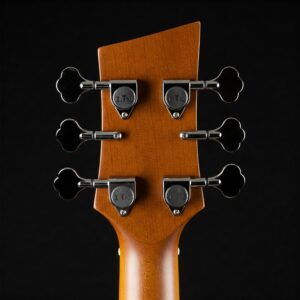
How to Choose the Right 5 String Acoustic Bass 🔎
Selecting the perfect 5 string acoustic bass requires careful consideration of several factors. Let’s explore the key elements that should influence your decision:
1. Tonal Preferences
Different woods and construction methods produce distinct tonal characteristics:
- Spruce tops provide bright, articulate tones with strong projection
- Cedar tops offer warmer, darker sounds with rich overtones
- Mahogany bodies deliver mid-range focus with controlled overtones
- Maple bodies produce bright, transparent tones with excellent note definition
Consider the music styles you play most frequently. For jazz and folk, warmer tones might be preferable, while rock and contemporary styles might benefit from brighter, more articulate sounds.
2. Playability Factors
Comfort and ease of playing should be primary considerations:
- Neck profile: Thinner necks facilitate faster playing but thicker necks may provide more stability
- String spacing: Wider spacing suits fingerstyle players, while tighter spacing benefits those using picks
- Body dimensions: Smaller-bodied instruments offer better comfort but may sacrifice some acoustic volume
- Weight distribution: Well-balanced instruments reduce fatigue during long sessions
Remember that the additional string makes the neck wider than a standard bass, so comfort is especially important.
3. Amplification Needs
Consider how and where you’ll be playing your instrument:
- Purely acoustic use: Focus on instruments with larger bodies for better projection
- Amplified performance: Prioritize quality electronics and feedback resistance
- Recording purposes: Look for balanced frequency response and minimal handling noise
- Versatile application: Choose acoustic-electric models with quality preamp systems
4. Budget Considerations
Quality instruments exist at every price point:
- Entry-level ($300-500): Good for beginners or as backup instruments
- Mid-range ($500-1000): Excellent for most hobbyists and semi-professional players
- Professional ($1000+): Premium materials and craftsmanship for discerning players
Invest according to your commitment level and professional needs, but remember that a higher price doesn’t always guarantee better sound or playability.
5 String Acoustic Bass Strings: A Critical Component 🎵
The strings you choose for your 5 string acoustic bass can dramatically impact its tone and playability. Unlike electric bass strings, acoustic bass strings require specific characteristics to perform optimally on acoustic instruments.
Types of Acoustic Bass Strings
Several string construction types are available for acoustic bass guitars:
Phosphor Bronze Strings
These popular acoustic bass strings provide bright, projecting tone with excellent longevity:
- Rich, warm tone with pronounced mid-range
- Excellent acoustic projection
- Moderate string tension
- Good longevity and corrosion resistance
80/20 Bronze (Brass) Strings
These strings offer bright initial tone that mellows over time:
- Crisp, bright attack
- Emphasized treble frequencies
- Slightly lower tension than phosphor bronze
- Tends to degrade faster due to skin oil interaction
Nylon Core or Coated Strings
Ideal for players seeking softer feel and longer string life:
- Smoother feel under fingers
- Reduced finger noise
- Extended lifespan
- Somewhat muted high frequencies
String Gauge Considerations
String gauge affects both playability and tone:
- Light gauge strings: Easier to play, brighter tone, less acoustic volume
- Medium gauge strings: Balanced response, moderate tension, good volume
- Heavy gauge strings: Fuller tone, more volume, higher tension requiring stronger technique
For the B string on a 5 string acoustic bass, proper gauge is crucial to maintain tension balance across all strings.
Specialized 5 String Sets
Major string manufacturers offer dedicated sets for 5 string acoustic bass guitars:
- D’Addario EJ170-5: Popular phosphor bronze set with balanced B string
- Ernie Ball Earthwood: 80/20 bronze with clear fundamental tones
- GHS Acoustic Bass Strings: Available in multiple tensions for different playing styles
- Elixir Nanoweb Coated: Long-lasting coated strings with extended bright tone
Playing Techniques for 5 String Acoustic Bass 👐
Mastering the 5 string acoustic bass requires adapting traditional techniques to accommodate the extended range. Here are some approaches to help you maximize your potential on this versatile instrument:
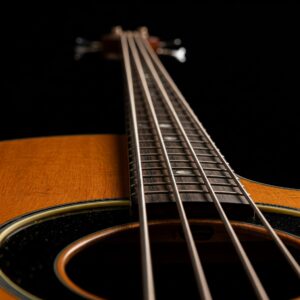
Adapting to the Low B String
The additional string requires some adjustment:
- Left-hand positioning: The wider neck demands careful attention to thumb placement and wrist angle
- Right-hand techniques: Adapting fingerstyle or pick techniques to incorporate the low B
- String muting: Developing skills to prevent unwanted string noise, especially important with the looser B string
- Scale patterns: Learning how patterns extend across the additional string
Fingerstyle Techniques
Fingerstyle playing produces warm, round tones ideal for acoustic instruments:
- Basic alternating technique: Using index and middle fingers alternately for consistent tone
- Three-finger technique: Adding the ring finger for faster passages and more complex patterns
- Thumb position: Using the thumb on the lower strings for walking bass lines
- Palm muting: Controlling sustain and tone by resting the palm near the bridge
Slap and Pop Technique
While challenging on acoustic instruments, slapping can produce interesting percussive effects:
- Adapted technique: Using lighter touches than on electric bass
- Bridge position: Finding the sweet spot that provides definition without harshness
- String choice: Using strings that respond well to percussive techniques
- Instrument selection: Some acoustic basses respond better to slap techniques than others
Maintenance and Care for Your 5 String Acoustic Bass 🧰
Proper maintenance ensures your instrument remains in optimal playing condition for years to come. Here are essential care practices for your 5 string acoustic bass:
Climate Considerations
Acoustic instruments are highly susceptible to climate changes:
- Humidity control: Maintain 45-55% relative humidity for optimal wood stability
- Temperature fluctuations: Avoid exposing the instrument to sudden temperature changes
- Storage solutions: Use humidified cases or room humidifiers in dry environments
- Travel precautions: Allow the instrument to acclimate gradually when moving between environments
Regular Cleaning and String Care
Routine maintenance preserves both appearance and function:
- Surface cleaning: Wipe down the instrument after each use to remove oils and sweat
- String longevity: Clean strings with a microfiber cloth to extend their life
- Fingerboard conditioning: Apply appropriate oils to unfinished fingerboards 2-3 times yearly
- Polish application: Use suitable instrument polish for finished surfaces
Seasonal Setup Adjustments
As seasons change, wood expands and contracts, potentially affecting playability:
- Truss rod adjustments: Address neck relief changes as needed
- Action height: Adjust string height for optimal playability without buzzing
- Intonation checks: Verify and adjust intonation, especially after string changes
- Professional setups: Consider seasonal professional setups for optimal performance
Amplification and Recording Tips 🎚️
Getting the best sound from your 5 string acoustic bass, especially in performance or recording situations, requires understanding its unique amplification needs.
Choosing the Right Amplifier
Not all bass amps are created equal when it comes to acoustic instruments:
- Acoustic-specific amplifiers: Designed to reproduce the natural characteristics of acoustic instruments
- Full-range systems: PA systems or keyboard amps that offer flat frequency response
- Traditional bass amps: Can work well but may color the tone significantly
- Effects consideration: Built-in effects like chorus and reverb can enhance acoustic tones
Microphone Techniques
For pure acoustic recording or reinforcement:
- Large diaphragm condensers: Capture full body and detail of acoustic bass
- Placement options: Experiment with positions near the soundhole, 12th fret, or bridge
- Room acoustics: Consider how the recording space affects the captured sound
- Blending techniques: Combining direct and microphone signals for full-bodied tone
DI (Direct Injection) Methods
For the cleanest amplified signal:
- Quality DI boxes: Passive or active options for impedance matching
- Preamp selection: Dedicated acoustic preamps can significantly enhance tone
- Ground lift options: Addressing potential noise issues in venue setups
- Signal path: Understanding the signal flow from instrument to mixing console
5 String Acoustic Bass in Different Musical Genres 🎭
The versatility of the 5 string acoustic bass makes it suitable for numerous musical styles. Let’s explore how this instrument shines across different genres:

Folk and Acoustic Music
The natural warmth of acoustic bass complements unplugged ensembles:
- Traditional folk: Providing foundational bass notes for Celtic, Americana, and bluegrass
- Singer-songwriter accompaniment: Supporting vocals with warm, unobtrusive bass lines
- Acoustic ensembles: Blending with acoustic guitars, mandolins, and other unplugged instruments
- World music traditions: Adapting to various cultural playing styles
Jazz Applications
The extended range works beautifully in jazz contexts:
- Walking bass lines: The low B extends traditional walking patterns
- Solo possibilities: The additional range enhances melodic solo opportunities
- Small ensemble work: Providing rich acoustic foundation without overwhelming other instruments
- Recording applications: Offering warm, natural tone for studio work
Contemporary and Fusion Styles
Modern approaches benefit from the extended range:
- Slap techniques: Adapted for acoustic projection
- Chordal playing: Extended voicing options with the additional string
- Tapping approaches: Two-handed techniques across a wider tonal palette
- Effects integration: Blending acoustic tone with modern processing for unique textures
DIY Setup and Adjustment Tips 🔧
While some maintenance is best left to professionals, many aspects of 5 string acoustic bass setup can be handled by careful owners:
String Height Adjustment
Optimizing action for comfortable play:
- Bridge saddle adjustments: Filing or shimming for ideal string height
- Nut slot depth: Ensuring proper string clearance at the headstock end
- Individual string considerations: Accommodating the thicker B string appropriately
- Balance across all strings: Maintaining consistent playability across the fingerboard
Truss Rod Management
Controlling neck relief for optimal playability:
- Identifying relief issues: Checking for excessive bow or backbow in the neck
- Making minor adjustments: Using the appropriate tools for quarter-turn adjustments
- Seasonal considerations: Adjusting as needed when climate changes affect the wood
- Professional assessment: Knowing when to seek expert help for significant issues
Intonation Optimization
Ensuring your bass plays in tune across the fingerboard:
- 12th fret comparison: Checking octave accuracy at the 12th fret
- Bridge saddle positioning: Adjusting individual saddle positions for precise intonation
- String age factors: Recognizing how worn strings affect intonation
- Scale length compensation: Understanding how different strings require different compensation
Accessories Worth Considering 🛒
Enhance your 5 string acoustic bass experience with these valuable accessories:
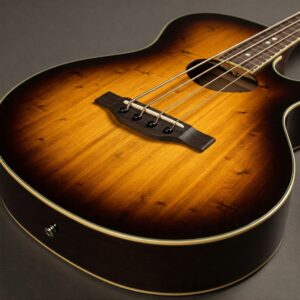
Cases and Gig Bags
Protection for your investment:
- Hardshell cases: Maximum protection for valuable instruments
- Premium gig bags: Balancing protection with portability
- Climate features: Humidification systems for environmental control
- Transportation considerations: Air travel compatibility and protection
Strap Systems
Comfortable playing support:
- Wide, padded straps: Distributing weight comfortably across your shoulder
- Double strap systems: Balancing larger acoustic instruments more effectively
- Strap locks: Preventing accidental drops during performance
- Length adjustment: Finding the optimal playing position
Picks and Fingerstyle Accessories
Tools for different playing approaches:
- Felt picks: Offering warm tone for acoustic instruments
- Fingerstyle picks: Thumb and finger picks for traditional approaches
- Finger guards: Protecting fingers during extended playing sessions
- Materials comparison: How different pick materials affect acoustic tone
Expert Advice: Common Questions Answered 💡
Making the Transition from 4 to 5 Strings
Many bassists have questions about adapting to a 5 string acoustic bass:
- Learning curve expectations: Most players adapt within a few weeks of regular practice
- Mental approach: Thinking of the B string as an extension rather than a completely new instrument
- Practice routines: Exercises specifically designed to incorporate the low B string
- Technical adjustments: Modifying hand position and technique for the wider neck
When to Choose Acoustic vs. Electric 5-String
Understanding the appropriate contexts for each:
- Unplugged settings: When natural acoustic sound is preferred
- Practice situations: Silent practice without amplification
- Tonal requirements: When the warm acoustic character is desired
- Recording scenarios: Capturing natural acoustic bass tone
Addressing Feedback Issues
Acoustic-electric basses can be prone to feedback when amplified:
- Soundhole plugs: Using dampening devices to reduce feedback
- EQ adjustments: Identifying and reducing problematic frequencies
- Positioning considerations: Finding stage positions that minimize feedback
- Pickup and preamp solutions: Using phase switches and notch filters
Where to Find 5 String Acoustic Bass Resources 📚
Continue your learning journey with these valuable resources:
Online Communities and Forums
Connect with fellow players:
- TalkBass.com: Dedicated forum sections for acoustic bass guitars
- Reddit r/Bass: Community discussions about acoustic instruments
- Facebook Groups: Specialized groups for acoustic bass enthusiasts
- Manufacturer communities: Brand-specific forums with model information
Instructional Materials
Develop your skills:
- Todd Johnson’s 6-String Bass Method: Adaptable to 5-string concepts
- Anthony Vitti’s “The Bass Grimoire”: Comprehensive scale reference including 5-string patterns
- YouTube channels: Free tutorials specific to 5-string acoustic bass
- Online course platforms: Structured learning programs for extended-range instruments
Recommended Retailers
Where to purchase quality instruments:
- Sweetwater: Extensive selection with detailed specifications
- Guitar Center: Try before you buy in physical locations
- Amazon: Convenient shopping with customer reviews
- Specialty bass shops: Expert guidance and premium selection
💡 Don’t Miss These Exclusive Deals! 🛍️
➡ Take your bass playing to the next level with these carefully selected products. Click on any highlighted item to check current pricing and availability. These premium instruments and accessories will help you maximize your 5 string acoustic bass experience!
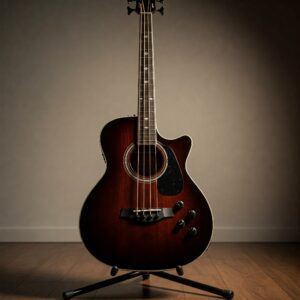
Conclusion: Is a 5 String Acoustic Bass Right for You? 🎯
After exploring all aspects of the 5 string acoustic bass, it’s time to consider whether this versatile instrument is the right choice for your musical journey.
The extended range and unique tonal characteristics of the 5 string acoustic bass make it an excellent option for players who:
- Require access to lower notes without detuning
- Play across multiple musical genres
- Enjoy the organic sound of acoustic instruments
- Value versatility and expanded creative possibilities
- Appreciate the option to play without amplification
While the learning curve may initially seem challenging, most players adapt quickly to the wider neck and additional string. The musical possibilities unlocked by the extended range often outweigh any temporary adjustment period.
Whether you’re a professional bassist seeking to expand your sonic palette or an enthusiast exploring new musical territories, the 5 string acoustic bass offers a compelling blend of traditional acoustic warmth and modern extended-range capabilities.
Consider your specific musical needs, playing style, and budget when making your decision. With the information provided in this guide, you’re now equipped to make an informed choice about incorporating a 5 string acoustic bass into your musical arsenal.
More FAQs
❓ How much heavier is a 5 string acoustic bass compared to a 4 string?
✅ Typically 10-15% heavier (about 0.5-1 pound more). The additional weight comes from the wider neck, extra tuning machine, and larger string. Weight varies by manufacturer, with premium models often using lighter woods to offset the difference...
❓ What's the average price difference between 4 and 5 string acoustic bass guitars?
✅ Approximately 15-25% more expensive. Entry-level 5 string acoustic bass models start around $350-400 compared to $250-300 for comparable 4-strings. The price gap often increases at higher price points due to increased craftsmanship requirements...
❓ Can I use regular bass strings on a 5 string acoustic bass?
✅ No, you need specialized acoustic bass strings for proper tone. Regular electric bass strings lack the core design and winding needed for acoustic resonance. Always choose strings specifically labeled for acoustic bass to ensure correct tension and projection...
❓ What amplifier works best with 5 string acoustic bass guitars?
✅ Acoustic-specific amps with full-range frequency response work best. Look for models with at least 60 watts of power, separate channels for instrument and microphone, and built-in notch filters to control feedback. Fishman, AER, and Acoustic brands offer excellent options...
❓ How difficult is it to transition from 4 to 5 string acoustic bass?
✅ Most players adapt within 2-4 weeks of regular practice. The main adjustments involve hand spacing for the wider neck and developing muscle memory for the B string position. Practice scales and arpeggios that incorporate all strings to speed up the transition...
Recommended for You:
- Ultimate Guide to 5 String Bass Strings: Must-Know Facts & Top Picks 2025
- The Ultimate Guide to Bass 5 Strings: Everything You Must Know to Master 2025
- 10 Incredible 5 String Electric Bass Guitar Options That Will Transform Your Sound in 2025
Disclaimer: This article contains affiliate links. If you purchase products through these links, we may earn a small commission at no additional cost to you.
✨Found this helpful? Share it with your friends! 💬🤗

